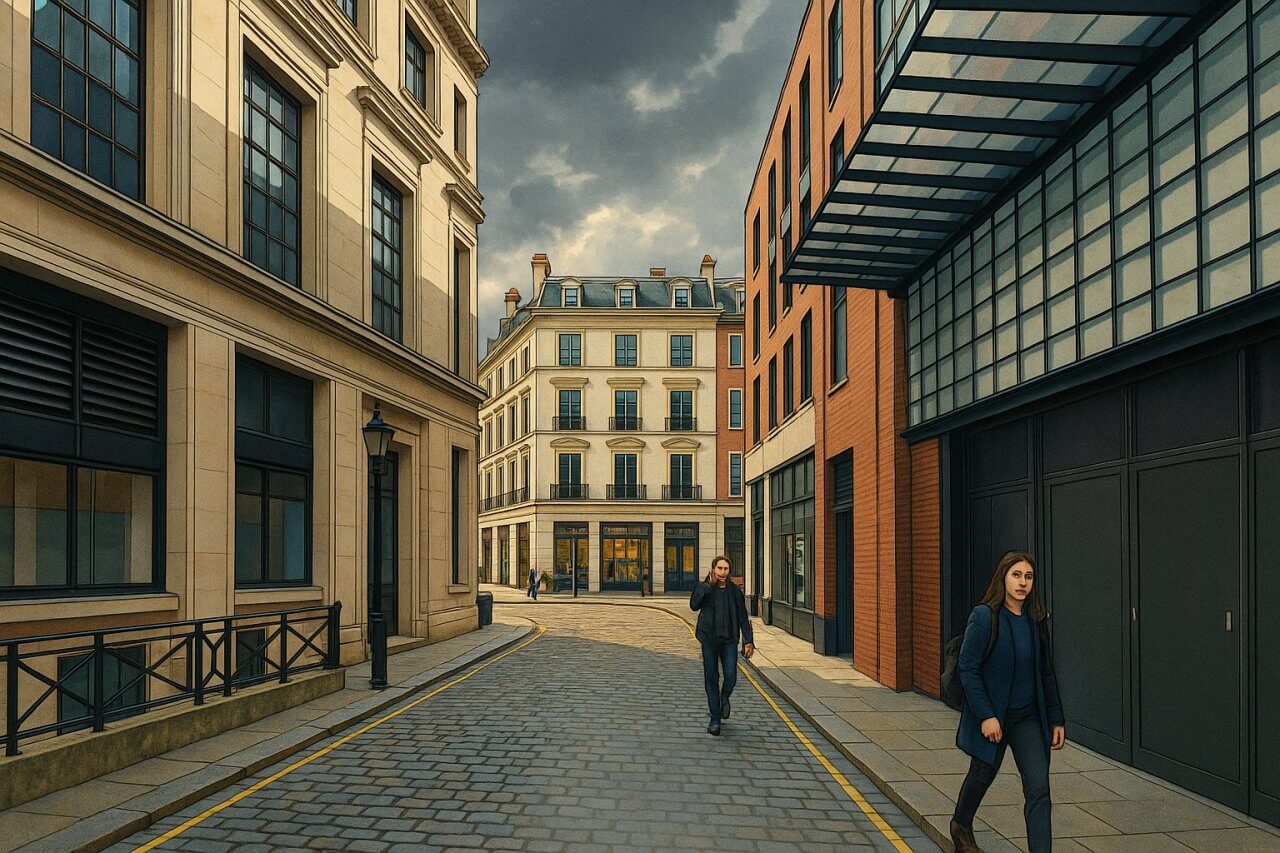
Swallow Place, London
Swallow Place is a brief but distinctive street tucked between the bustle of Oxford Street and the elegant thoroughfares of Mayfair, in the City of Westminster, central London. Measuring just 35 metres (114 feet) in length, it connects on its southern end to Princes Street, while its northern end terminates in a quiet cul-de-sac. From this cul-de-sac, a pedestrian walkway known as Swallow Passage leads directly north, emerging onto the sidewalk of world-famous Oxford Street.
Street Layout and Orientation
Swallow Place is a north–south aligned street, beginning at Princes Street to the south. Vehicular traffic can only enter from the southern junction, as the road is a dead end at the northern side. The short length and limited access make it largely pedestrian in character, used primarily by local businesses and foot traffic accessing Oxford Street via Swallow Passage.
The street is paved and well-maintained, flanked by commercial buildings that reflect both historic and contemporary London styles. The atmosphere is markedly quieter compared to the nearby Oxford Street, offering a brief respite from the shopping crowds.
Name and Pronunciation
Swallow Place takes its name from the Swallow Street that once extended northward from Piccadilly but was mostly lost during the redevelopment of the area in the 19th and early 20th centuries. The remaining stub, now known as Swallow Place, preserves the name as a historical relic.
The name Swallow is pronounced SWOL-oh /ˈswɒləʊ/  and is identical to the pronunciation of the bird, or the verb meaning to ingest. There is no known association with the bird in the naming origin; instead, it likely came from a historical resident, pub, or landmark in the area known as Swallow Street.
and is identical to the pronunciation of the bird, or the verb meaning to ingest. There is no known association with the bird in the naming origin; instead, it likely came from a historical resident, pub, or landmark in the area known as Swallow Street.
Historical Background
The name Swallow Street appeared in the early 17th century, and at that time it extended from Piccadilly towards what is now Oxford Street. Over the centuries, urban development—particularly the construction of Regent Street in the 19th century—led to the truncation and redevelopment of much of Swallow Street, leaving a northern fragment of the street now known as Swallow Place.
Swallow Passage, the pedestrian continuation from the cul-de-sac to Oxford Street, likely emerged in the 20th century as foot traffic increased with the growth of retail in the West End.
Character of the Street
Though short in length, Swallow Place has a unique urban character. It is lined with a mixture of office buildings, small shops, and entrances to larger retail premises whose primary frontages are on Oxford Street or Regent Street. It is often used as a delivery and service access point. The street is clean and generally quiet, particularly compared to its noisy northern neighbour, making it a curious back-route for those who enjoy exploring the lesser-known arteries of Westminster.
What to See Nearby
Swallow Place lies in a prime location, with several iconic destinations within a few minutes' walk:
- Oxford Street: One of London’s busiest shopping avenues, home to department stores like Selfridges, John Lewis, and House of Fraser.
- Regent Street: Known for its elegant curve and upscale retail offerings.
- Hanover Square: A historic green space nearby, popular for its Georgian townhouses and garden.
While Swallow Place itself is not a tourist destination per se, its proximity to Oxford Street makes it an interesting discovery for those navigating the backstreets of the West End.
Property and Real Estate
As of May 2025, commercial properties along Swallow Place are priced at approximately £1,700–£2,200 per square foot (£18,300–£23,700 per sq metre), reflecting the central location and proximity to retail giants. Office spaces typically range from 1,000 to 3,500 square feet (93–325 sq metres), though few residential units are available on the street itself due to its predominantly commercial use.
Compared to the broader City or residential parts of St James's, Swallow Place offers premium commercial value thanks to its footfall potential and central location.
Transport Connections
Nearest London Underground Stations
- Oxford Circus Station (3 minutes' walk): Served by the Bakerloo Line, Central Line, and Victoria Line.
- Bond Street Station (5 minutes’ walk): Served by the Central Line and Jubilee Line.
- Piccadilly Circus Station (10 minutes’ walk): Served by the Piccadilly Line and Bakerloo Line.
Bus Stops
Nearby Oxford Street and Regent Street feature multiple bus stops served by routes including the 6, 13, 23, 139, and 453, providing easy access to London Underground Stations, rail terminals, and other destinations across the capital.
Fun Fact
Despite its size, Swallow Place may be familiar to music lovers and pop culture fans: the now-defunct Swallow Street once housed various clubs and restaurants that were frequented by the fashionable elite of London in the 1920s and 1930s. Though little remains today, the name preserves a whisper of that past glamour in its current form.
Quick Facts
- Location: City of Westminster, central London
- Length: 35 metres
- Traffic Direction: One-way from Princes Street; cul-de-sac at northern end
- Continues as: Swallow Passage (pedestrian route to Oxford Street)
- Historical Origin: Formerly part of the larger Swallow Street
- Pronunciation: SWOL-oh /ˈswɒləʊ/
- Character: Quiet, commercial, foot traffic oriented
- Nearby Sights: Oxford Street, Regent Street, Hanover Square
- Nearest Tube Stations: Oxford Circus, Bond Street, Piccadilly Circus
- Nearby Bus Routes: 6, 13, 23, 139, 453
- Property Prices: £1,700–£2,200 per sq ft (as of May 2025)
Map of Swallow Place, London

Painting of Swallow Place, London (View image in full size)